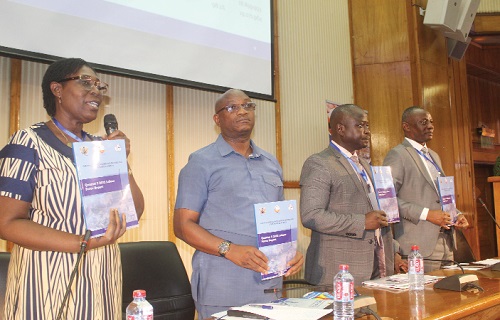
More women unemployed than men — Statistical Service
Two out of every three of unemployed individuals are females, a survey by the Ghana Statistical Service (GSS) has revealed.
Advertisement
Also, one in every four youth are neither in training, in school nor employed, pushing the rate of youth unemployment up from 19.7 per cent to 25 per cent.
The survey on the Ghana 2022 Annual Household Income and Expenditure Third Quarter Labour Force Report, said in all, over 1.7 million Ghanaians representing 13.2 per cent of the labour force, were unemployed, with some unable to find jobs, unable to find food to eat, and were multi-dimensionally poor.
“At any point in time, 1.7 million persons are unemployed in Ghana. These are predominantly females, specifically two out of every three,” the Government Statistician, Professor Samuel Kobina Annim, said at an event to launch the report in Accra yesterday.
The data, Prof. Annim said, showed that the reasons for female unemployment were beyond their mere gender.
Highlights of report
The highlights of the report included statistics on economic activity status, employment status, unemployment rate, youth not in employment, education or training and labour mobilities across quarters.
Specifically, it included the movements in and out of employment, and across economic sectors such as agriculture, industry and services.
The report also showed that the number of persons who were unemployed and multi-dimensionally poor remained at an average of about 615,000 across the three quarters, with a marginal increase of close to 20,000 more persons between the second and third quarters.
“However, the number of persons unemployed, food insecure and multi-dimensionally poor decreased by 78,000 between the first and second quarters but increased by almost 55,000 in the third quarter.”
While the number of unemployed persons represented about 13.2 per cent of the entire labour force, across the first three quarters of last year, about 157, 000 persons experienced an unemployment spell.
The spell of unemployment means any period of one or more days on which a person is unemployed.
For the youth, the outcome is worrying as a sizeable number were unemployed, not in school nor in training.
Employed
Prof. Annim said close to 7.5 million persons remained employed throughout the period, out of the about 11 million persons employed in each quarter.
“This indicates that across the three quarters, about 3.5 million persons were moving in and out of employment depicting vulnerabilities,” he said.
Another key finding was that the transition from informal employment to unemployment was on the average five times more than from formal employment into unemployment.
“Two out of every three unemployed persons in quarter three that were employed in quarter one were in vulnerable employment in the first quarter,” he said.
Not mere data
Prof. Annim said the purpose for the data collection was not just to add up to the statistics, but was also intended to paint the real picture and help policymakers make informed decisions to resolve the problem.
He urged stakeholders to take advantage of the report to re-evaluate its approach towards the job creation agenda.
“Our goal as the Statistical Service is to point policymakers to what we think or how we target these issues.
“So it is not just the fact that we put out the statistic that about a quarter of our youth are unemployed; we are providing further information on where you can maximise your gains if you decide to deal with it.
“We interrogate the data and tell the policymaker that it picks up a 21. So most of our youth at age 21-- that is where you don’t find them doing any of these three things – they are not in training, going to school or employed.
“And that is where you can maximise your returns rather than tagging the age bracket 30 to 35. So if you really want to maximise your gains in addressing the issue, then target age 21, and if you think about this carefully, it coincides with the transition from school to work,” the Government Statistician explained.
Policymaking
The Deputy Minister of Employment and Labour Relations, Bright Wireko-Brobbey, said the report would guide policymakers to make informed decisions on employment.
He said the narrative around the informal sector jobs should be taken seriously and make it attractive for the youth because jobs in the informal sector had built the country.
“We need to look at the narrative and make the informal sector jobs attractive to help reduce



